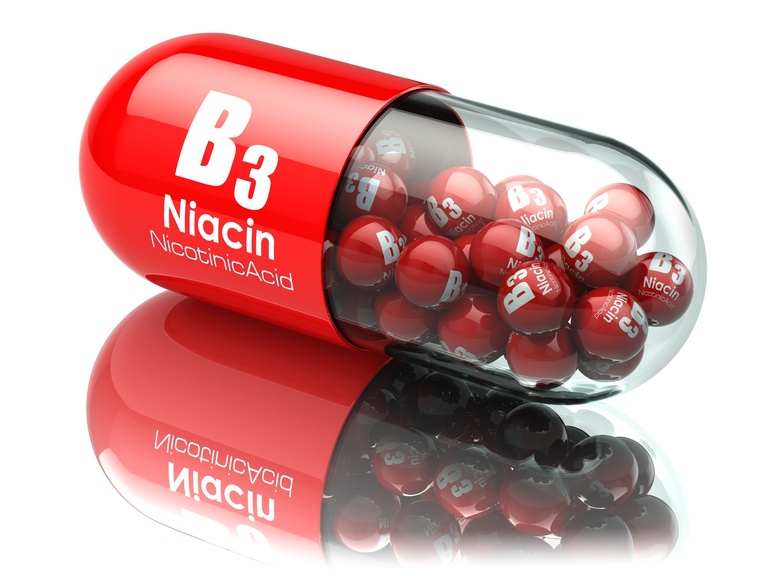 Many cosmetics contain vitamin B3 but it very rarely the main ingredient. Meanwhile, vitamin B3 has a beneficial influence on the skin: it moisturises it, heals acne and other skin diseases and provides the antioxidising effect. What other cosmetic features has vitamin B3 to offer?
Many cosmetics contain vitamin B3 but it very rarely the main ingredient. Meanwhile, vitamin B3 has a beneficial influence on the skin: it moisturises it, heals acne and other skin diseases and provides the antioxidising effect. What other cosmetic features has vitamin B3 to offer?
Vitamin B3 (niacin) – properties
Vitamin B3 penetrates the skin
Vitamin B3 penetrated the skin which makes it easier to help overcome skin problems, such as acne, blemishes, redness, roughness and inflammations. What’s more, its effectiveness can be improved by using so-called penetration promoters. In comparison to other chemical ingredients of similar properties, vitamin B3 is stable and resistant to light, heating and oxidation, thanks to which it has been used in industry. In cosmetics, vitamin B3 may be present as niacin, niacinamide or nicotinamide.
Vitamin B3 moisturises, smoothes and protects the skin
Vitamin B3 limits the loss of water through the skin, regulates skin renewal processes and stimulates the production of collagen in skin cells. In addition, it is a powerful antioxidant which means that it inhibits the formation of free radicals and protects the skin against UV radiation. In addition, it reduces discoloration and prevents the formation of new ones. Thanks to this ingredient, the skin becomes smoother, healthier and younger-looking.
Vitamin B3 in cosmetics
For a cream with vitamin B3 to be effective, its concentration should be at the level of at least 2 percent. Unfortunately, cosmetic companies do not have to indicate the percentage of individual ingredients of the products. Therefore, the order of ingredients will be helpful in the selection of a cream with vitamin B3; What does it mean? At the beginning of the list of ingredients, there are substances with the highest concentration. Therefore, if you find vitamin B3 at the end of such a composition, its content in the cosmetic is very low.
Vitamin B3 – history
Although vitamin B3 was discovered in 1867, it was better known only in the 1930s during an epidemic of skin disease. Three million people were diagnosed with Pellagra, of which 100,000 died. The main symptoms of the disease are the appearance of flaky patches, redness and blisters, accompanied by headaches, diarrhoea, insomnia and depression. It is stated that the cause of pellagra is a poor diet, which causes vitamin B3 deficiencies. Therefore, niacin is sometimes called the vitamin PP – an abbreviation of a pellagra-preventive factor.

Leave a Reply